Notes notation

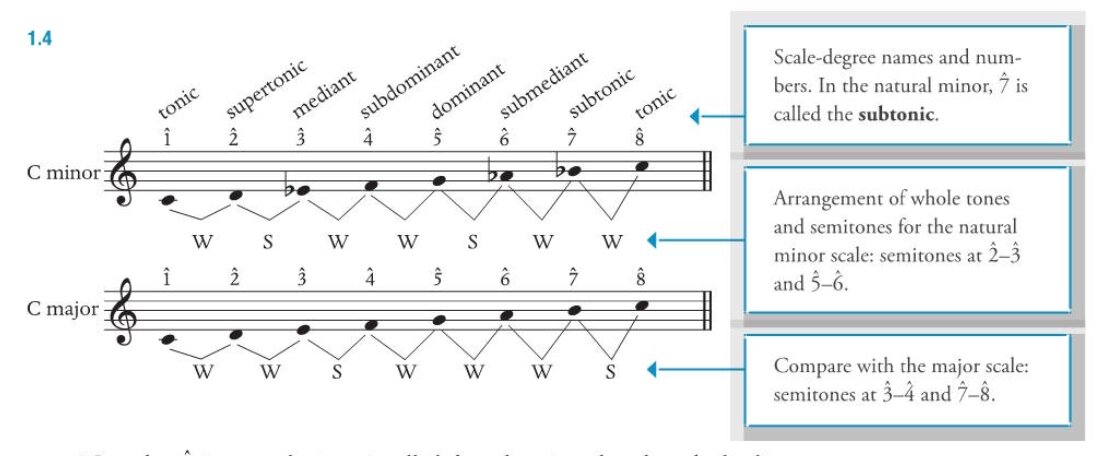
- harmonic minor: raised $\widehat{6}$
- melodic minor: raised $\widehat{6},\widehat{7}$
more clarification examples
- minor $\widehat{3}$: refers to the note that form a minor third interval with $\widehat{1}$. in minor it’s $\widehat{3}$, in major it’s lowered $\widehat{3}$
- minor $\widehat{6}$: refers to the note that form a minor sixth interval with $\widehat{1}$. in minor it’s $\widehat{6}$, in major it’s lowered $\widehat{6}$
Chords Notation
Triads
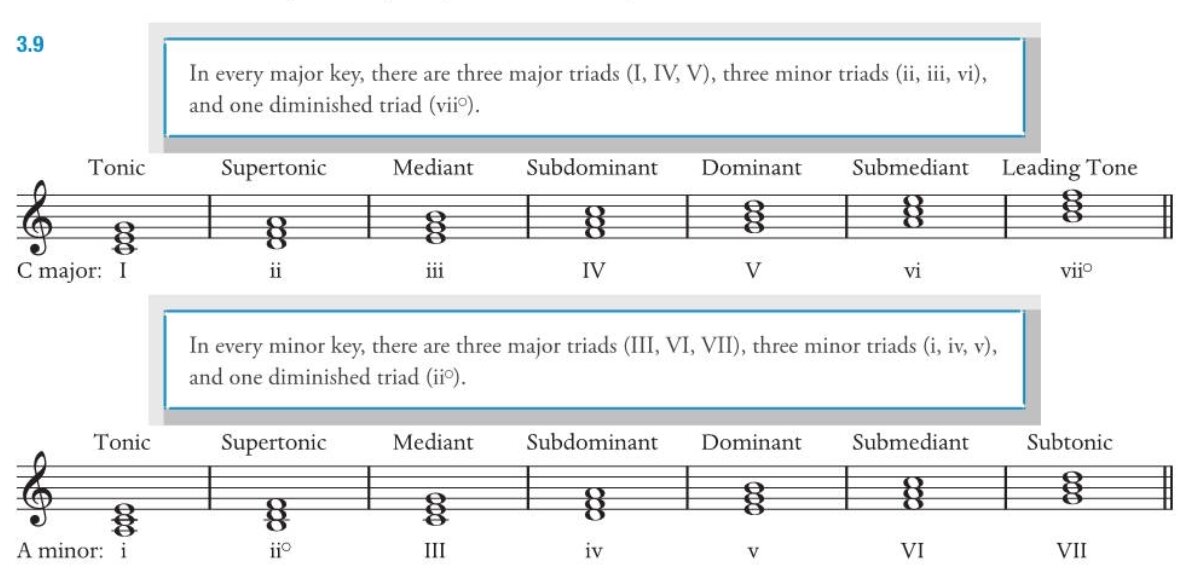
majors are written in uppercase
minors are written in lowercase
Triads inversion
Subscript: interval between the second note and the lowest note
Superscript: interval between the highest note and the lowest note
-
$_3^5 \text{=root position.}$
-
$_3^6 \text{=first inversion. abbreviation:} ^6$
-
$_4^6 \text{=second inversion}$
-
$_{\text{#3}}^{\phantom{\text{#}}5}$: 5 and $\text{#}3$ above bass. Abbreviation: $^{\text{#}}$
-
$_{♭3}^{\phantom{b} 5}$ :5 and b3 above bass. Abbreviation: $^{♭}$
-
$^{_{\text{#}}^6}$ :6 and $\text{#3}$ above bass.
When talking about notes in inverted chords, the degree in the root position is used: for example, doubling the 5th for $\text{I}^6$ means doubling the sol note.
Sevenths
${\text{C}^{\circ}}^7$: fully diminished. Also $\text{Cdim}^7$
$\text{C}^{\varnothing7}$: half diminished.
$\text{Cm}^7$: minor seventh.
$\text{C}^7$: dominant seventh.
$\text{Cmaj}^7$: major seventh.

Sevenths inversion
$\underset{\text{3}}{\overset{\text{7}}{\Tiny{5}}}=\text{root position. abbreviation:}^7$
$\underset{\text{3}}{\overset{\text{6}}{\Tiny{5}}}=\text{first inversion. abbreviation:}_5^6$
$\underset{\text{3}}{\overset{\text{6}}{\Tiny{4}}}=\text{second inversion. abbreviation:}_3^4$
$\underset{\text{2}}{\overset{\text{6}}{\Tiny{4}}}=\text{third inversion. abbreviation:}_2^4 \text{ or } ^2$
$\underset{\text{#3}}{\overset{\text{7}}{\Tiny{5}}}$ :7, 5 and #3 above bass. abbreviation: $^{_{\text{#}}^7}$
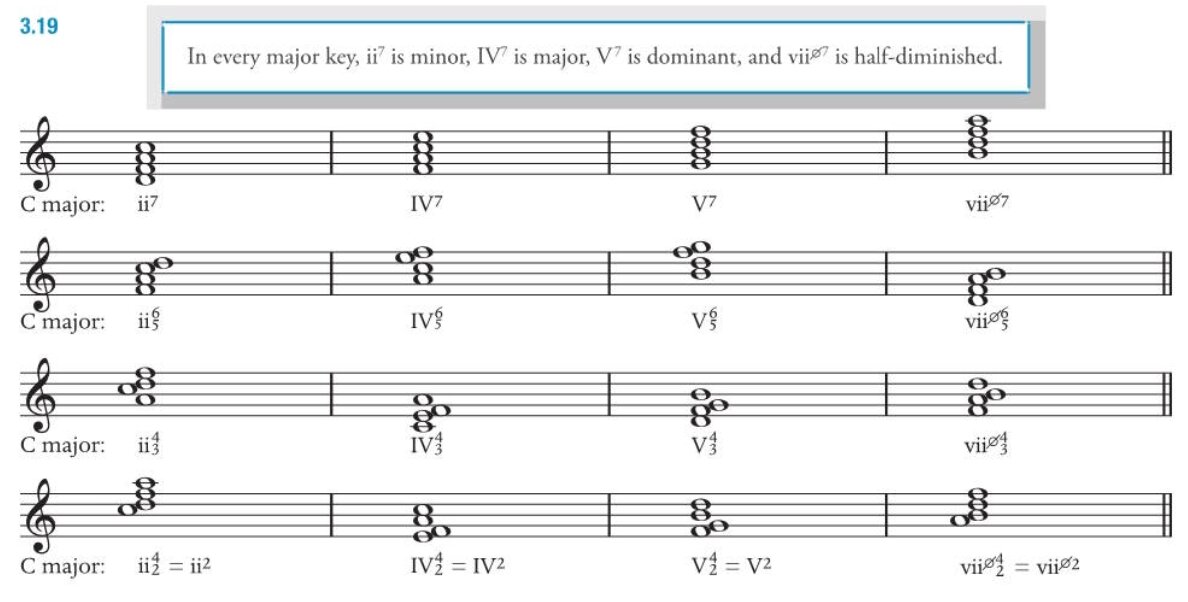
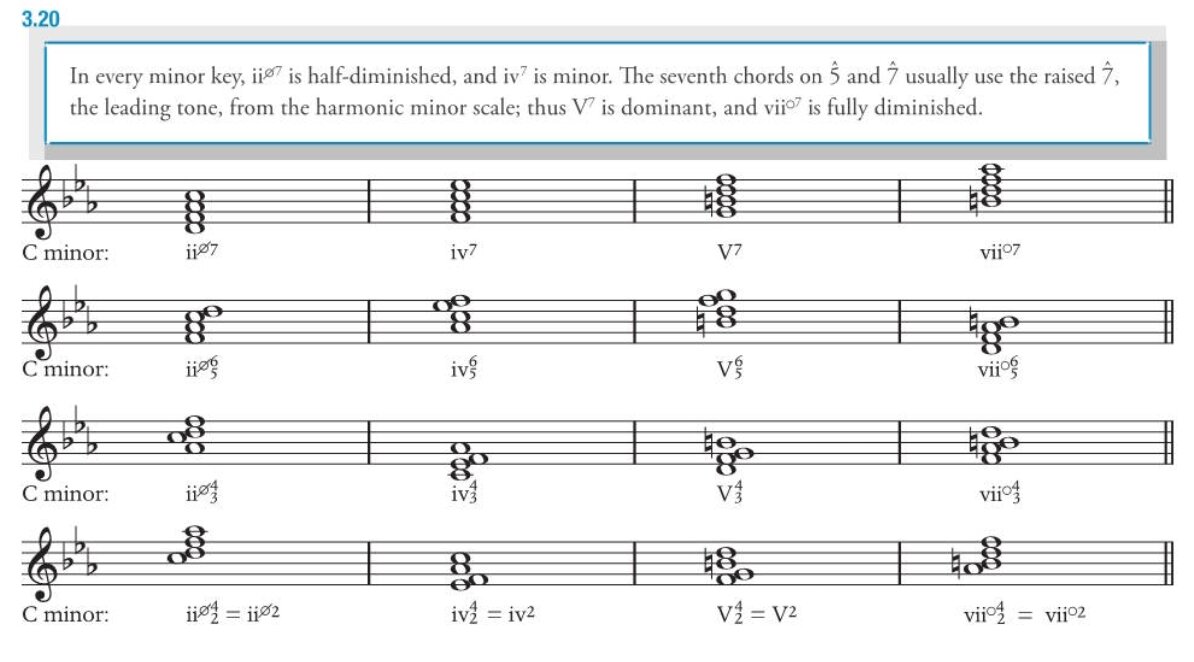
Parts Notation
Range

Drawing
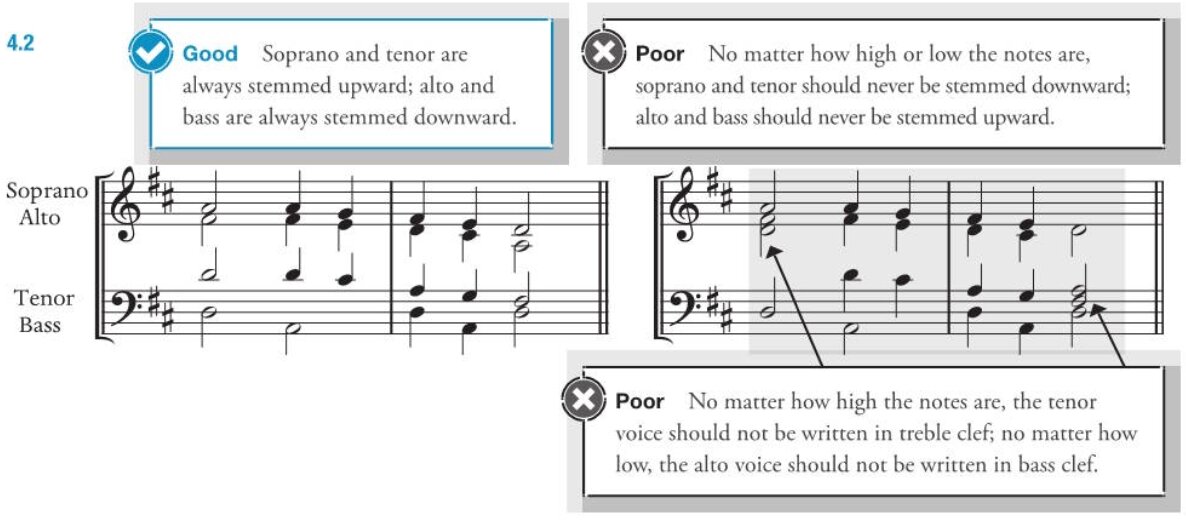
Spacing - SATB format
- soprano-alto, alto-tenor should never be more than an ocatve apart.
- tenor-bass can be more than an octave apart.
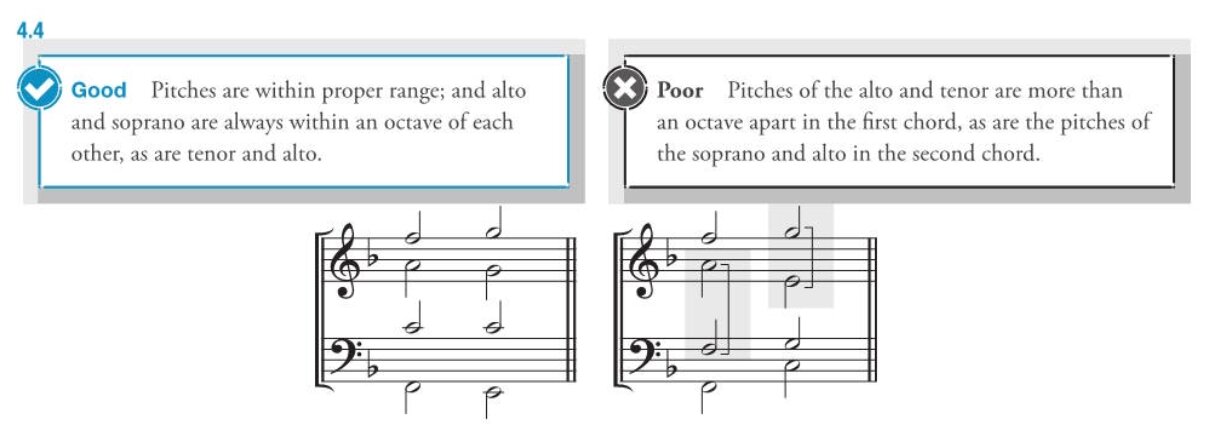
Spacing - Keyboard format
- the top voices should be within an octave
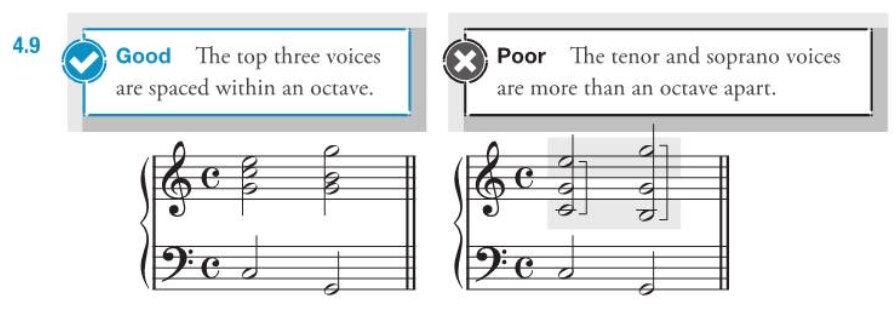
Crossing

Inversion - Keyboard format
- Always determined by the bass.
- Upper voices can have other arrangement

Realization
Major
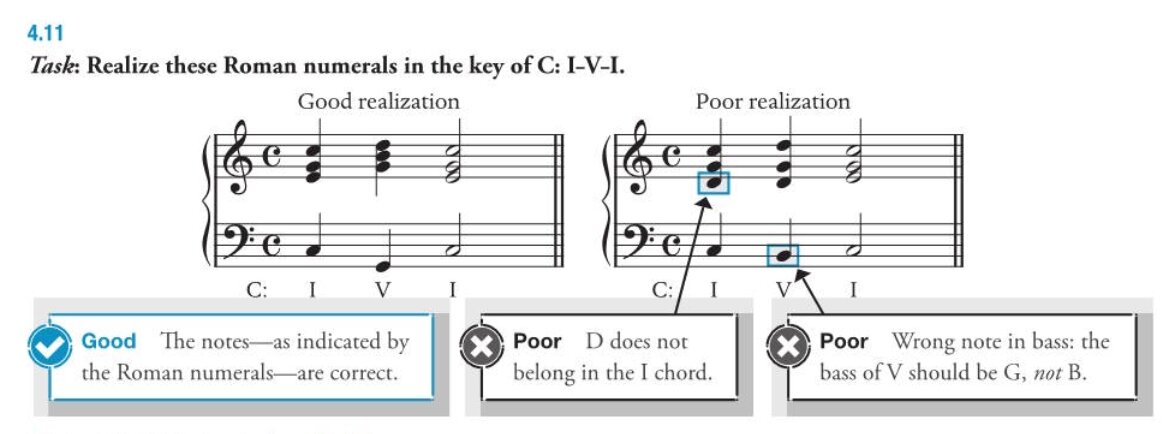
Minor
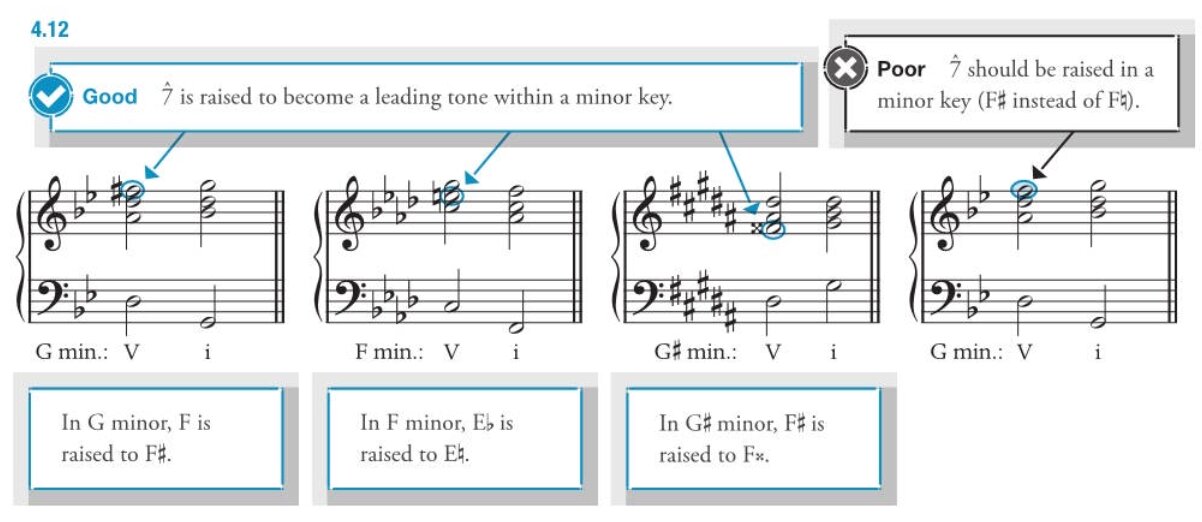
Doubling
Triads need doubling.
- triads need doubling
- root-position and second-inversion: bass
- first-inversion: any note
- never double tendency tones
- no need to double seventh chord
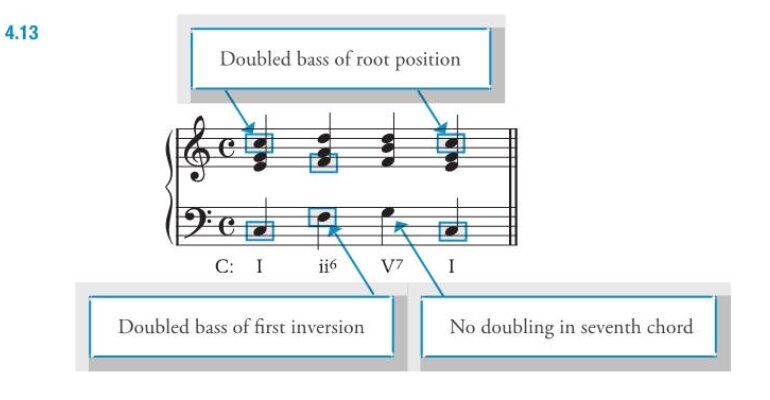
Never double tendency tones
- leading tone
- the seventh of a senventh chord
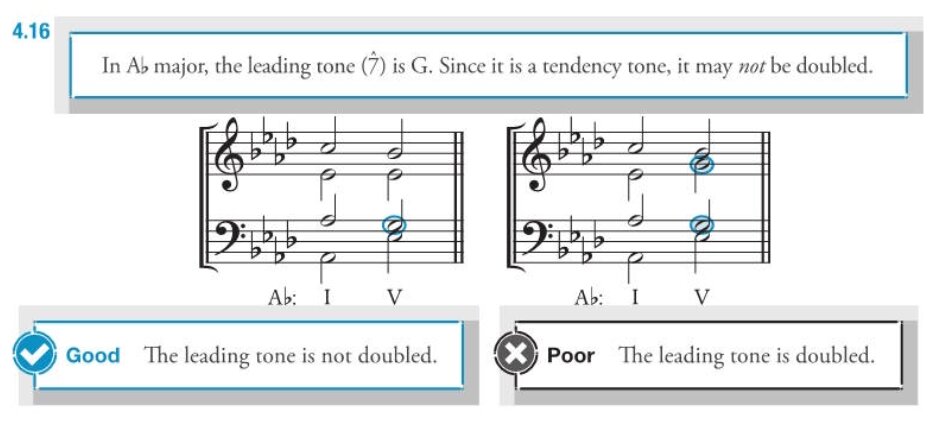

Figured bass
the bass is given


Accidentals
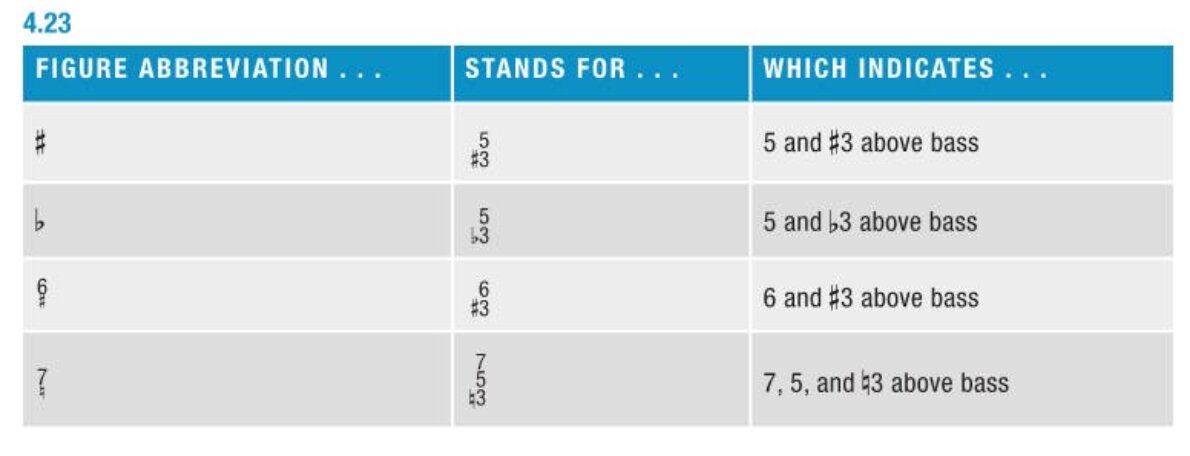

Voice leading basics
- upper voices
- changing chord:
- either stay the same or move by step/third
- should not have leap greater than 6th
- same chord: could leap (chord skips)
- changing chord:
- bass: frequently use melodic leaps
more
- avoid leap of 7th or greater than octave in any voices, including bass
- melodic augmented interval should not appear in any voice
- do not leap upward more than a third to a leading tone
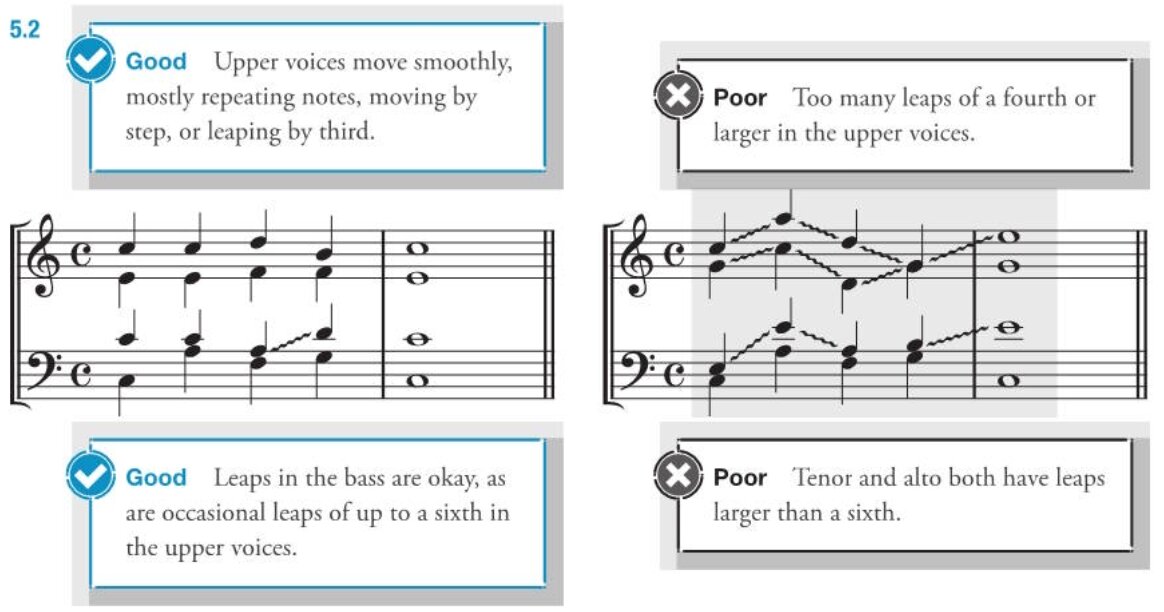

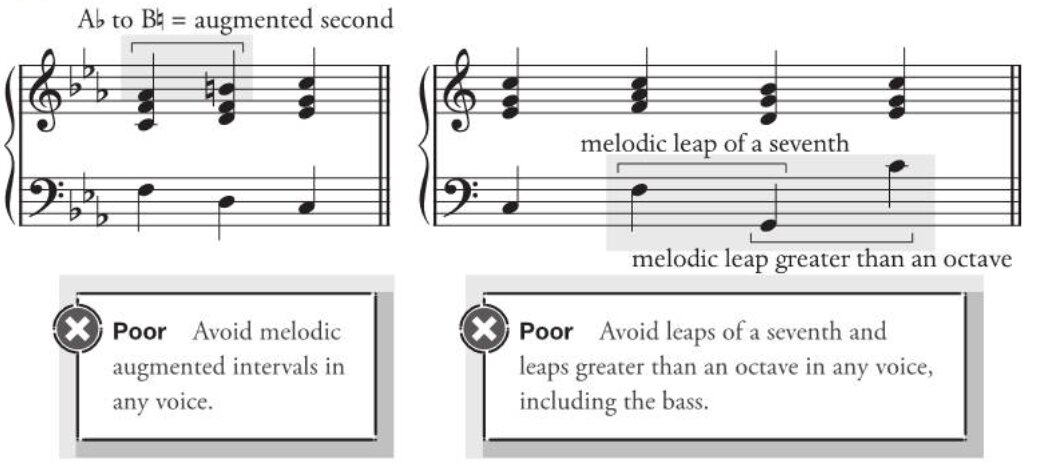

motions
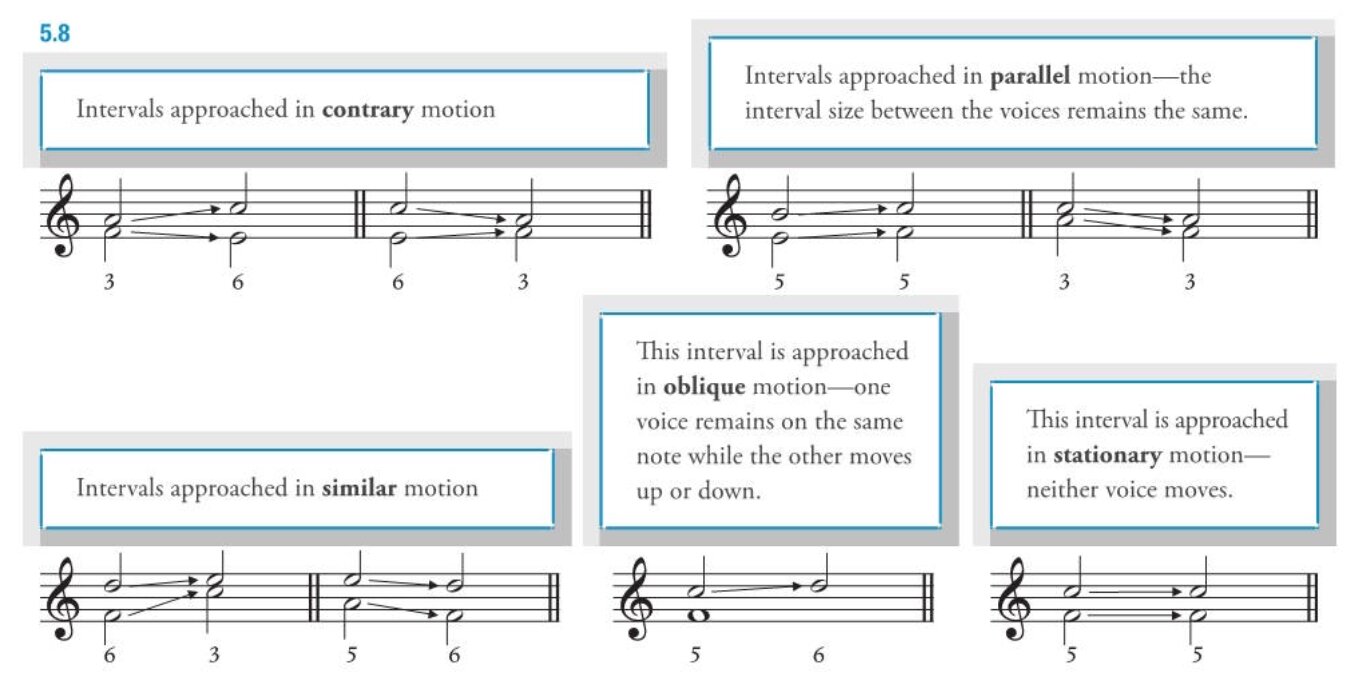
motion rules
do not approach perfect intervals by parallel motion (between any two parts)
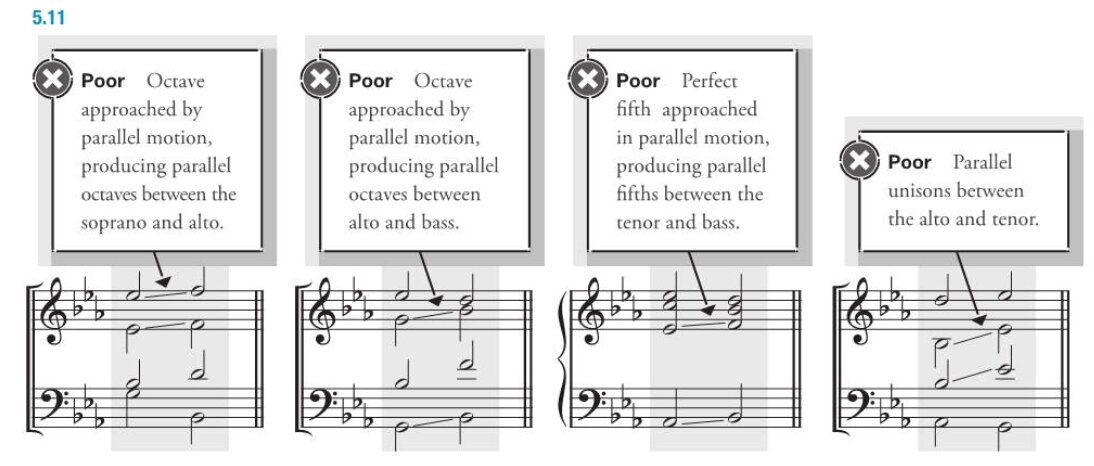
perfect 5th - diminished 5th is ok, but not in the oppsite direction
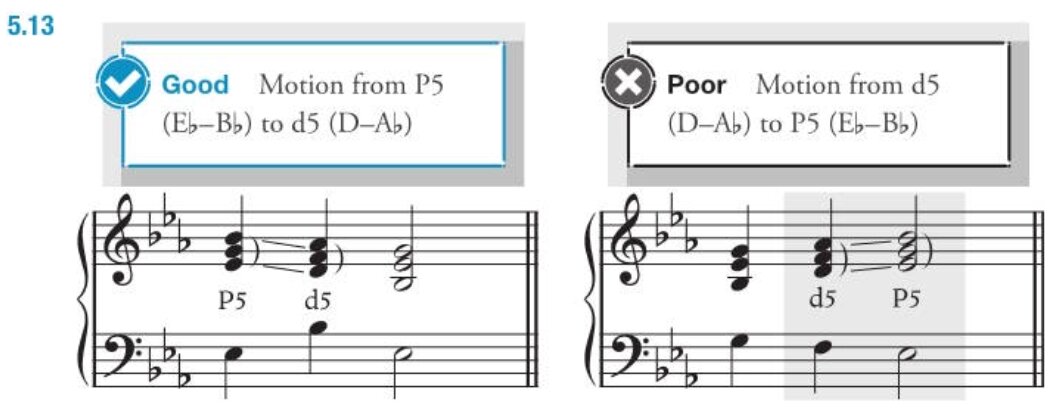
when approaching perfect intervals between outer voices by similar motion, the soprano needs to move by step (otherwise, “hidden parallel 5th”)
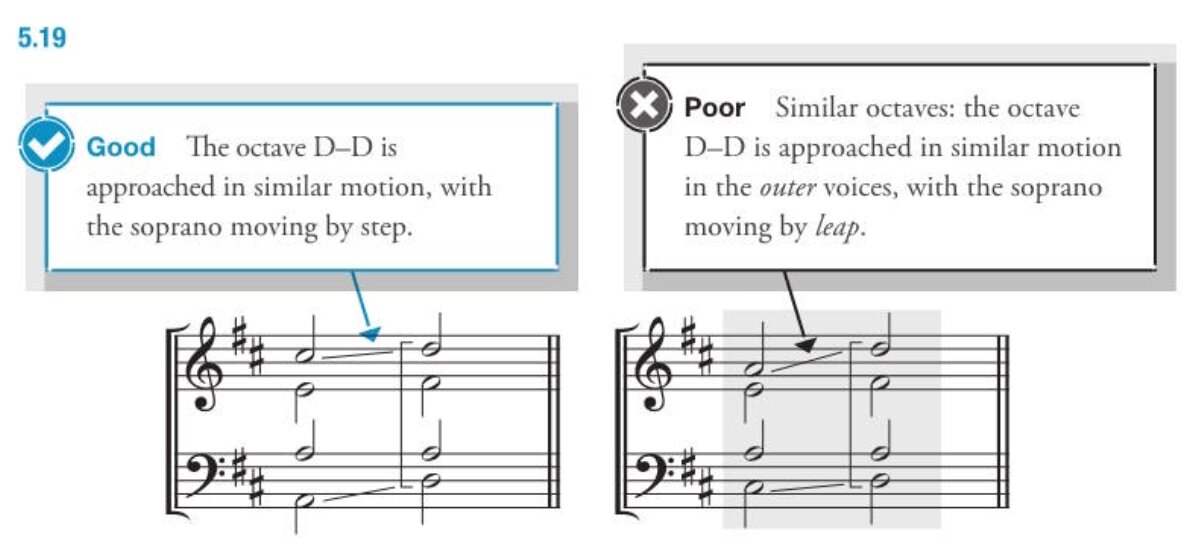

perfect union between any two voices should not be approched by similar motion

octave should not be approached from 2th or 7th interval via similar motion
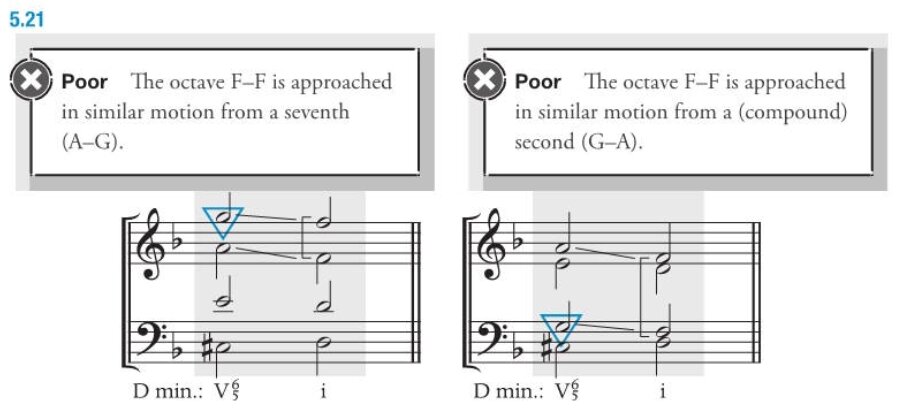
leading tones
- in outer voices, if the next chord contains the tonic, resolve up
- in inner voices, do not have to resolve up

chordal 7th tends to move down by a step
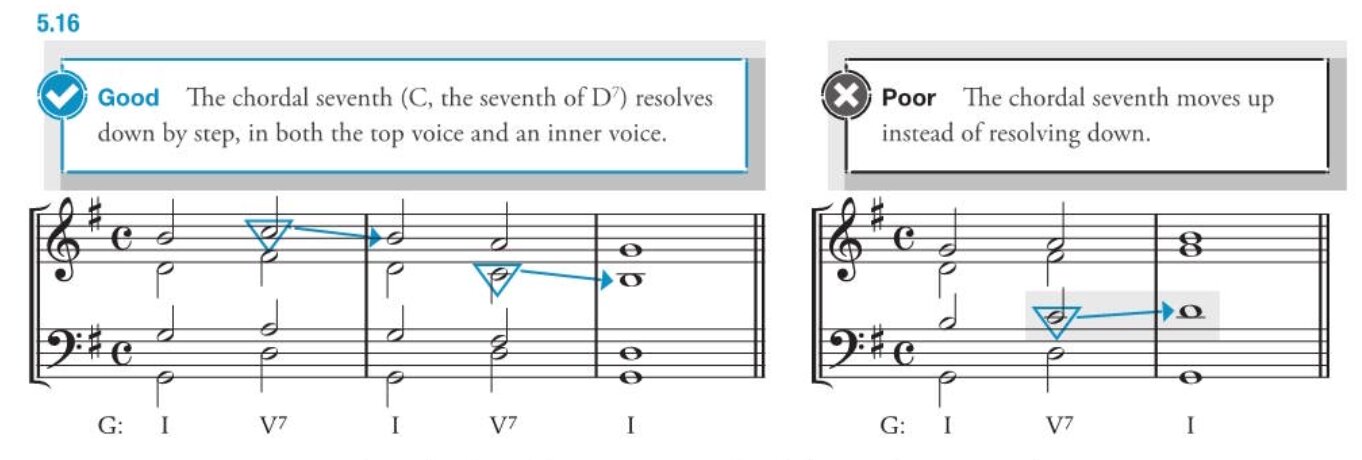
example
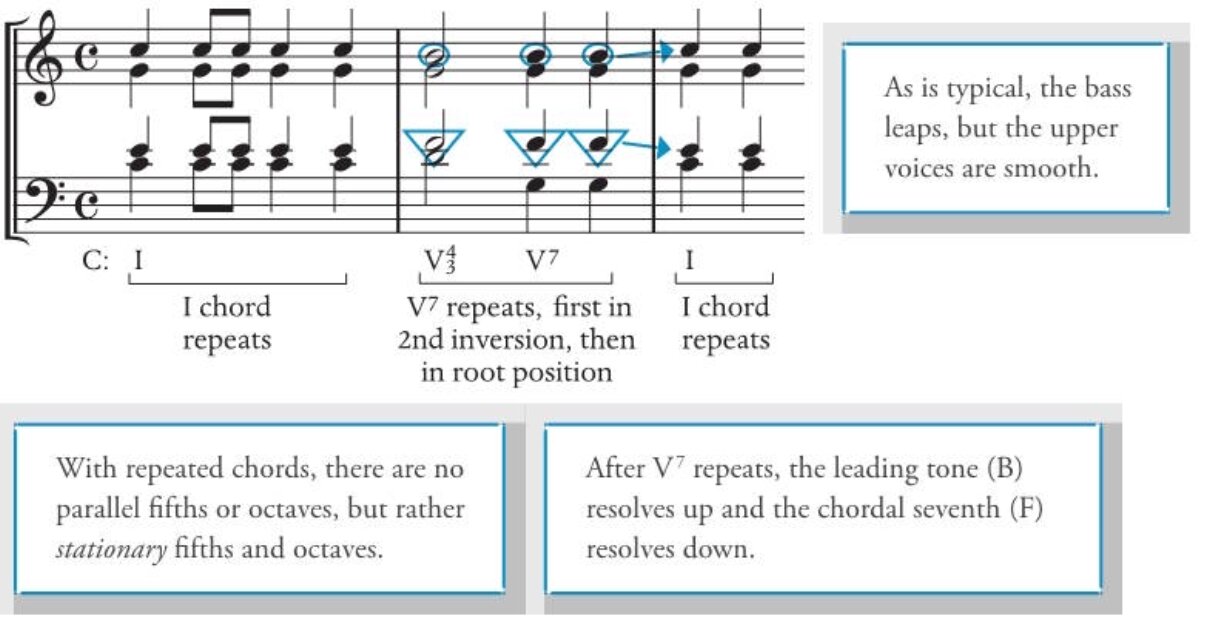
Candences
- Authentic: $\text{V}-\text{I}$ or $\text{V}^7-\text{I}$ (or i)
- Perfect: melody ending in $\widehat{1}$ (PAC)
- Imperfect: melody ending in $\widehat{3}, \widehat{5}$ (IAC)
- Half cadence: $?-\text{V}$ (HC)
- Phrygian: $\text{iv}^6-\text{V}$
- Plagal: $\text{IV}-\text{I}$
- Deceptive: (root position)$\text{V}/\text{V}^7-\text{vi}$ not really a cadence
IAC and PAC
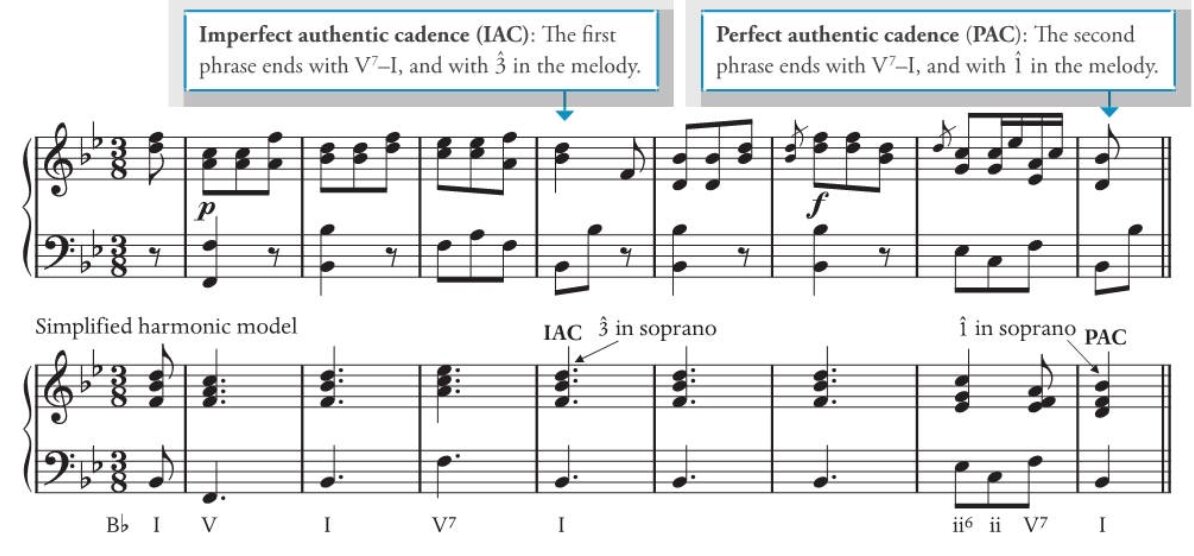
T-D-T
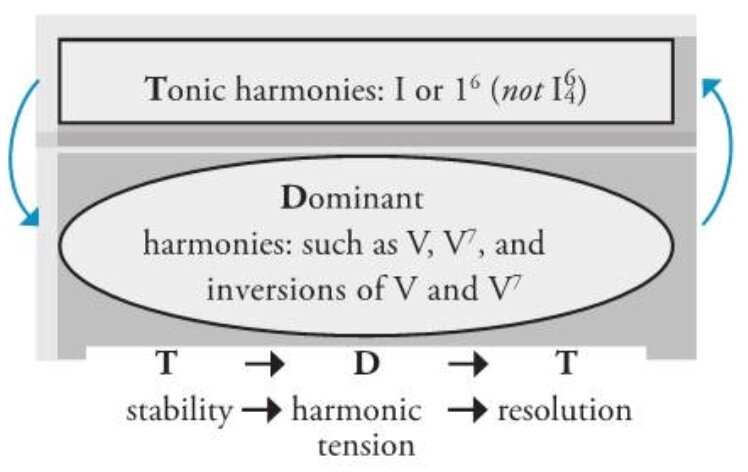

T-S-D-T
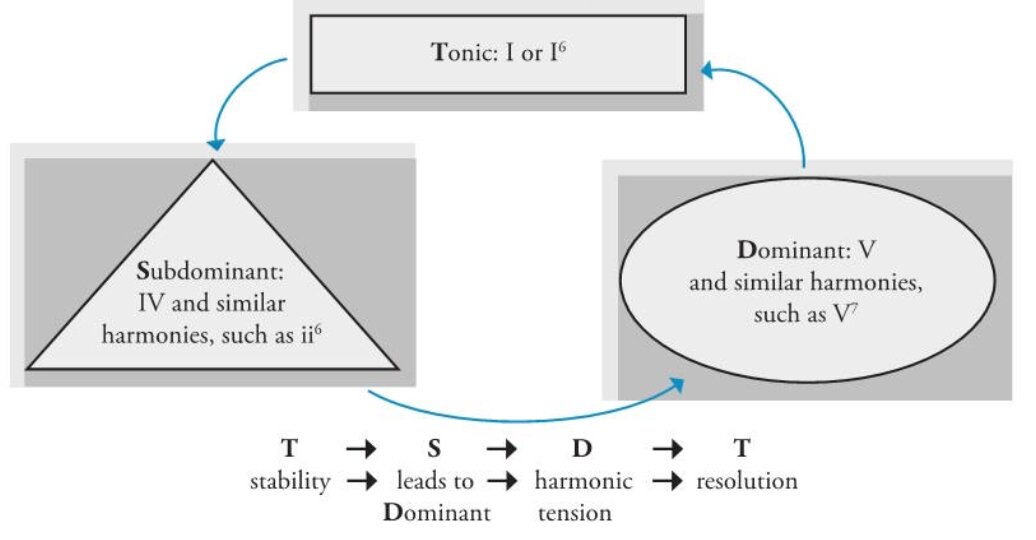
V-I
voice leading
- when double, double the root of $\text{I}$ or $\text{V}$
- when moving between I and V, the upper voices usually either stay the same or move by step/third; the bass could leap
- when the chord is unchanging (sustained or repeat), can have leaps in upper voices
leading tone
- leading tone must not be doubled
- leading tone in upper voice must resolve up by step to tonic
- leading tone in inner voice does not have to resolve up by step
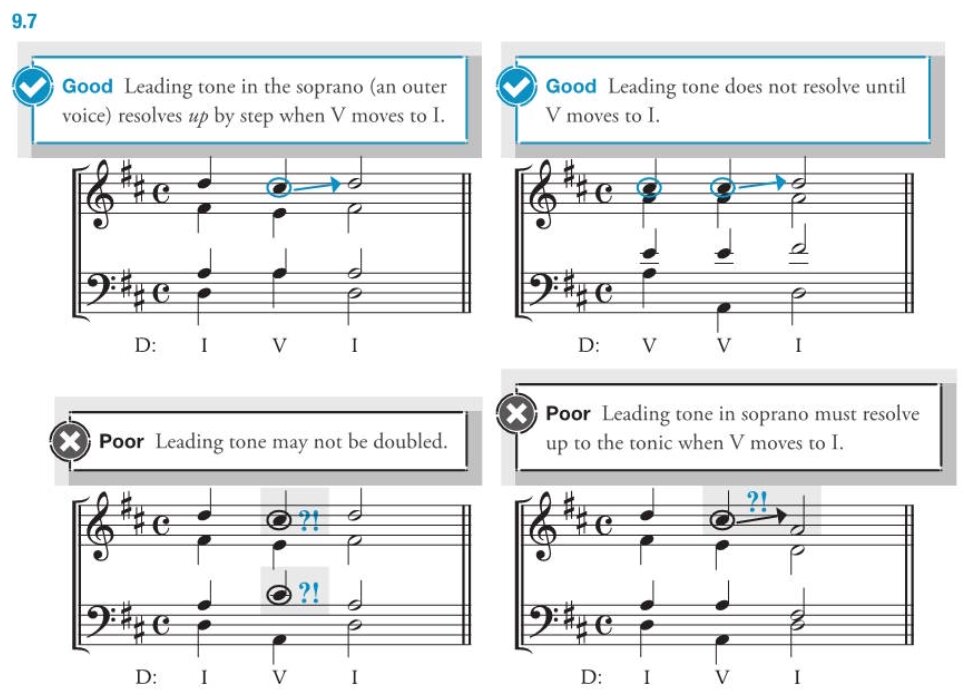
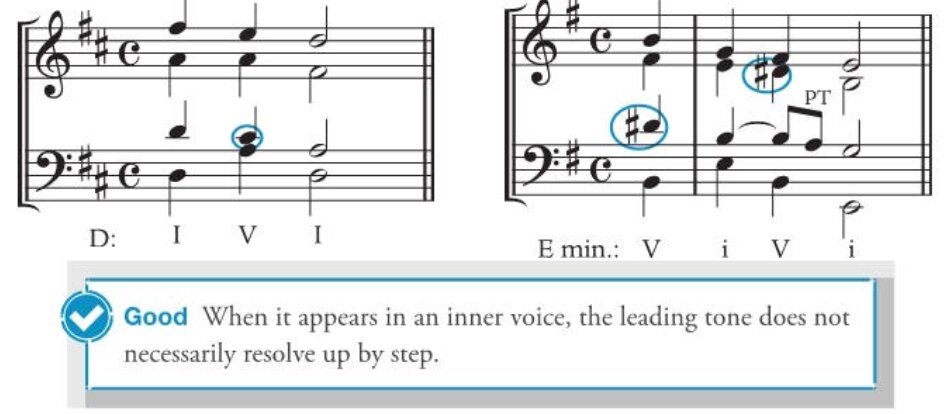
recipes

$\text{I}^6$
- appears in early/mid phrase, could extend/alternate with $\text{I}$
- common in half cadence $\text{I}^6-\text{V}$, with $\text{V}$ in root position
- authentic cadence only ends with $\text{I}$ not $\text{I}^6$
- evaded cadence: use $\text{I}^6$ instead of $\text{I}$ to evade perfect authentic cadence (PAC)

evaded cadence example

$\text{I}^6$ voice leading
any of root, third, fifth could be doubled
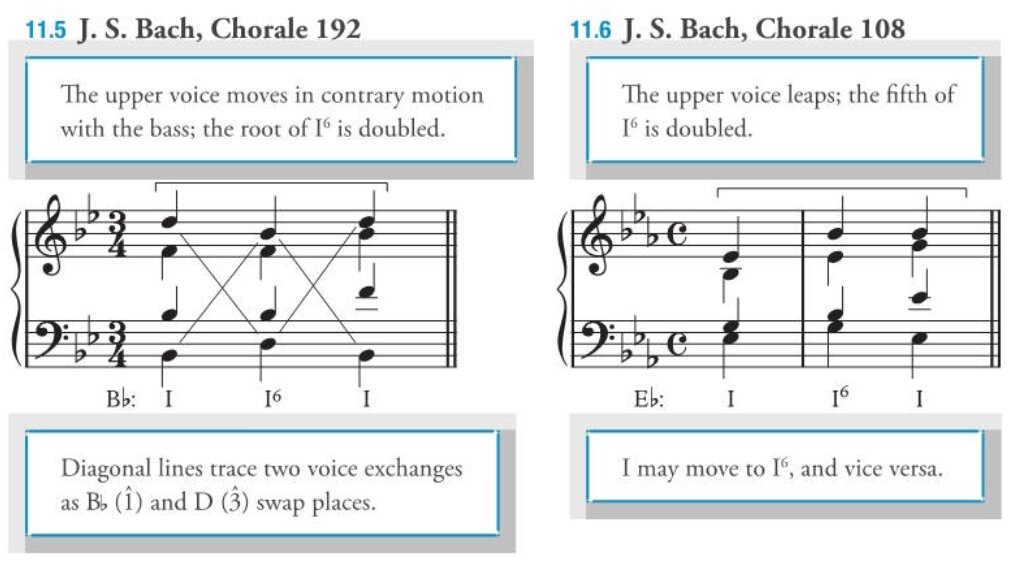

avoid parallel octave
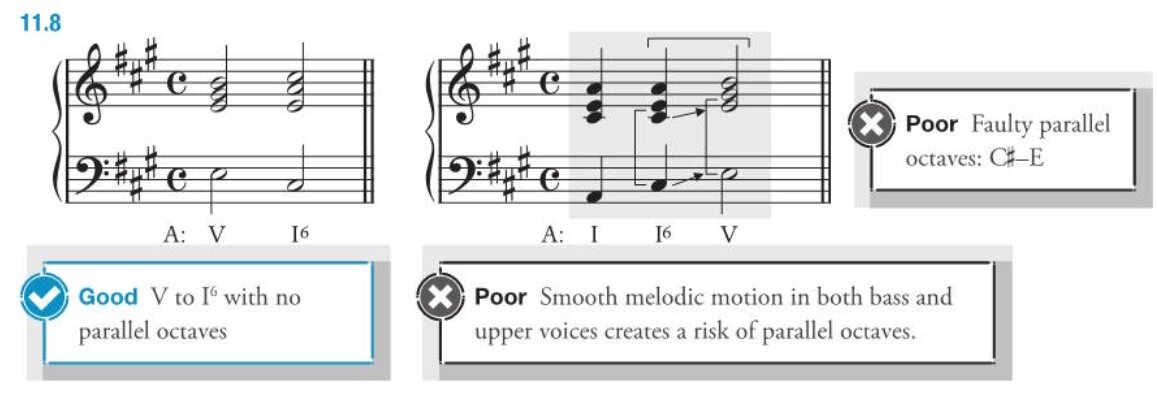
$\text{I}^6$ could move to $\text{V}$, and $\text{V}$ could move to $\text{I}^6$
$\text{I}^6$ could move to $\text{V}^7$, but $\text{V}^7$ to $\text{I}^6$ is bad
(remind voice leading rule: octave should not be approached from 2th or 7th interval via similar motion)
